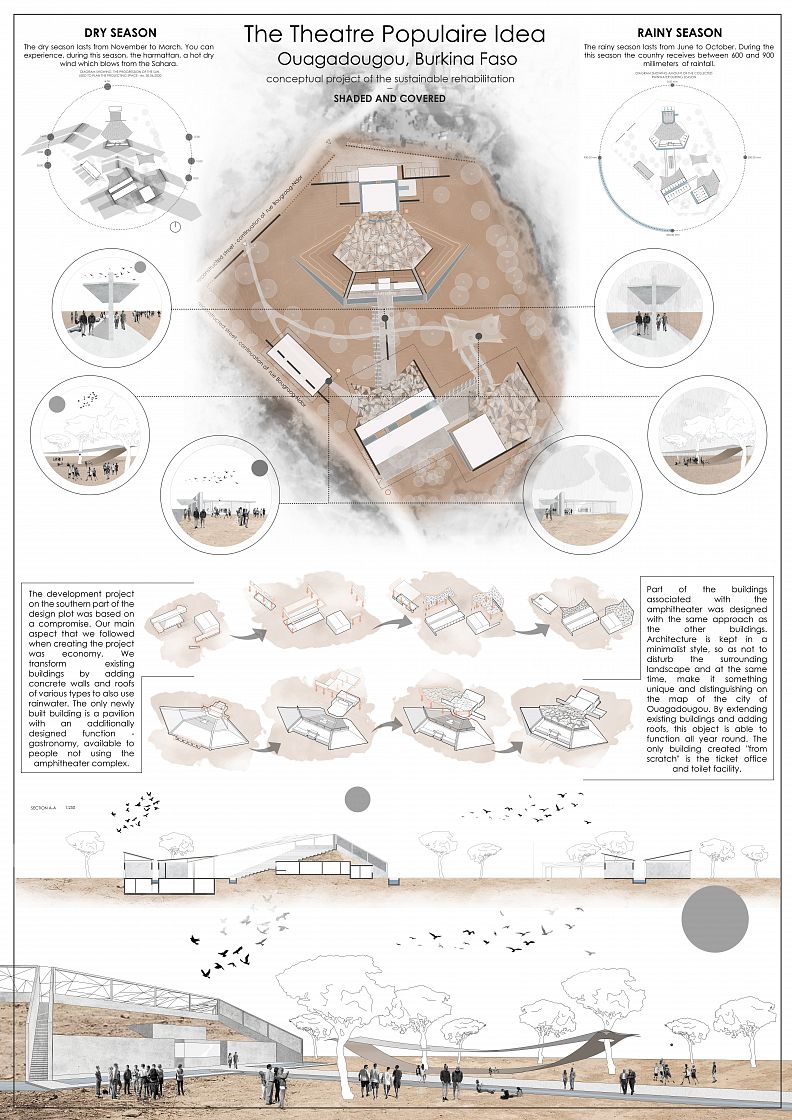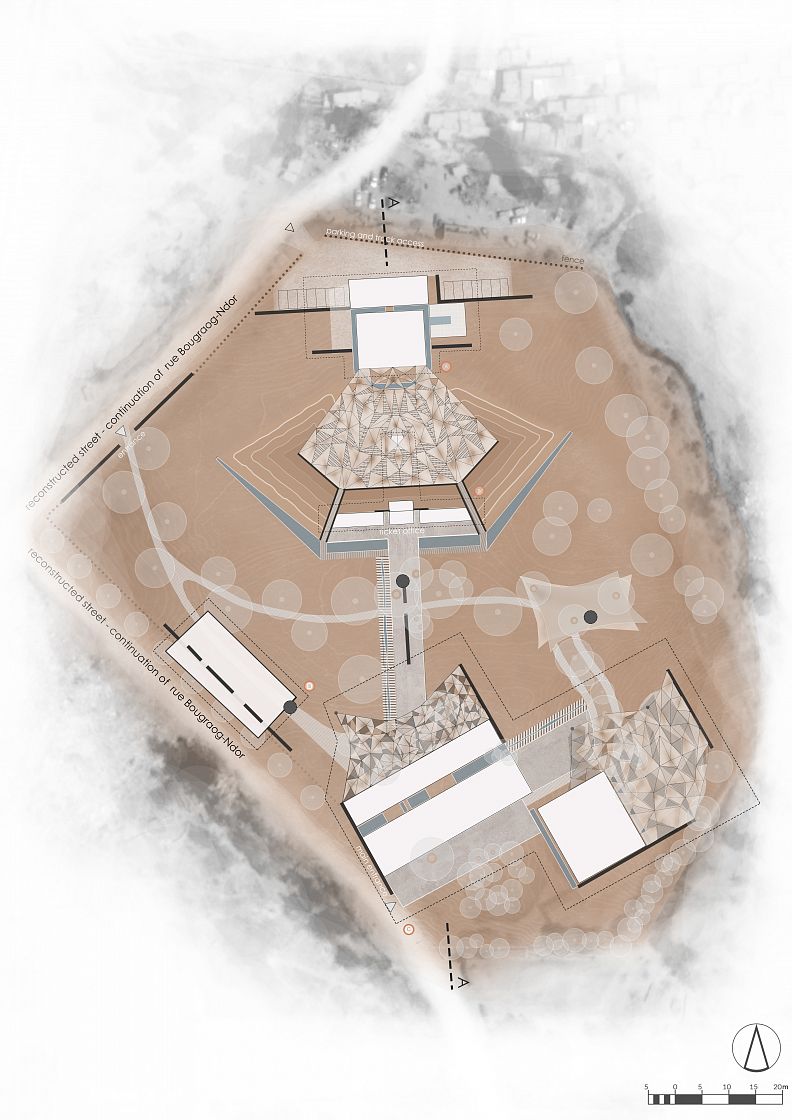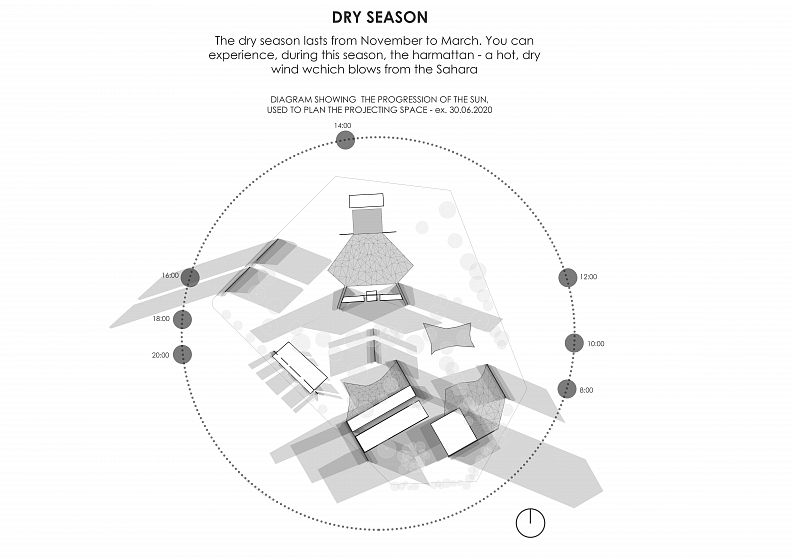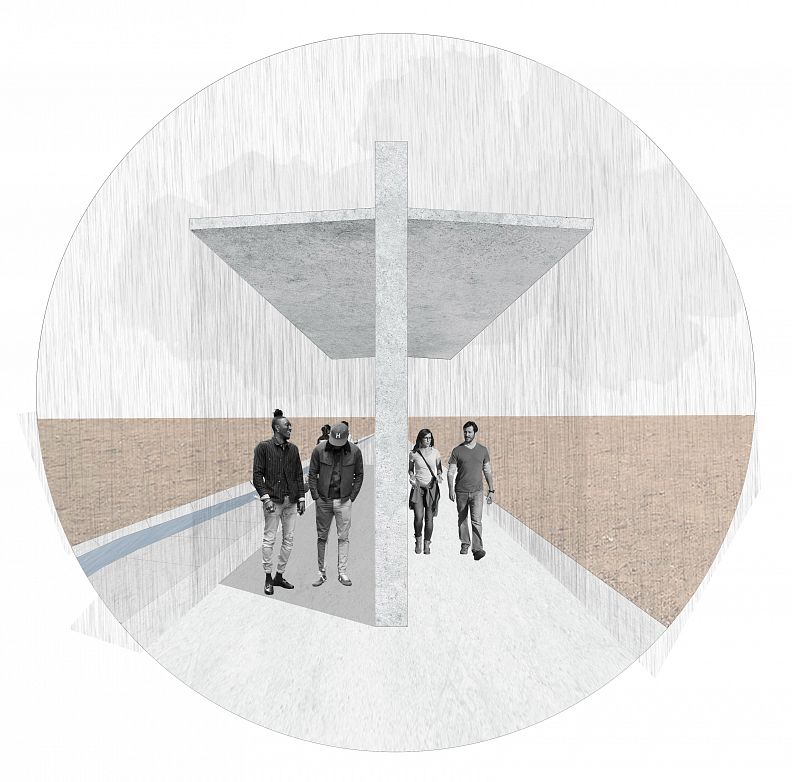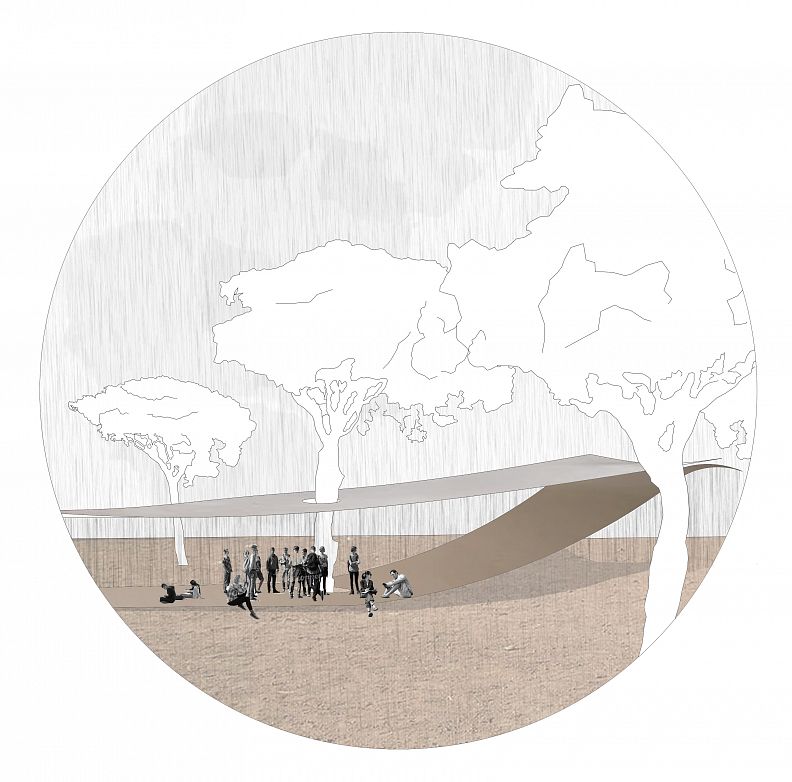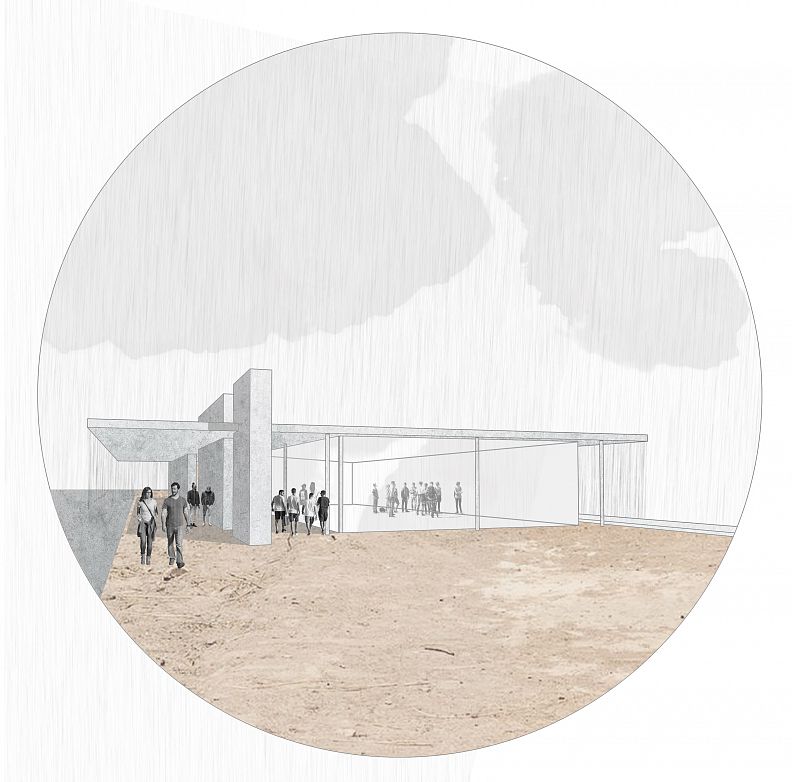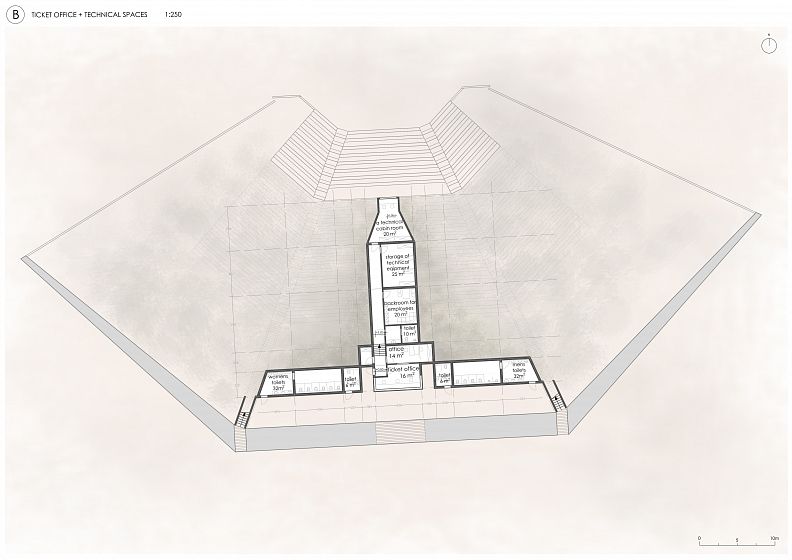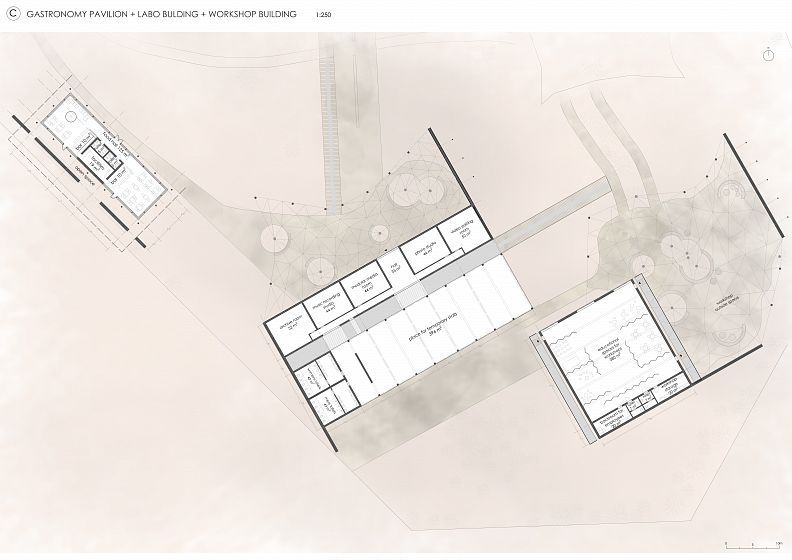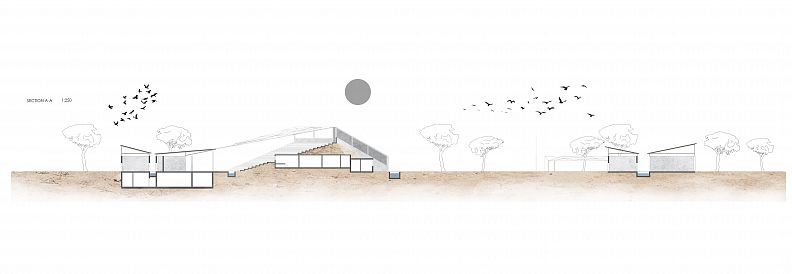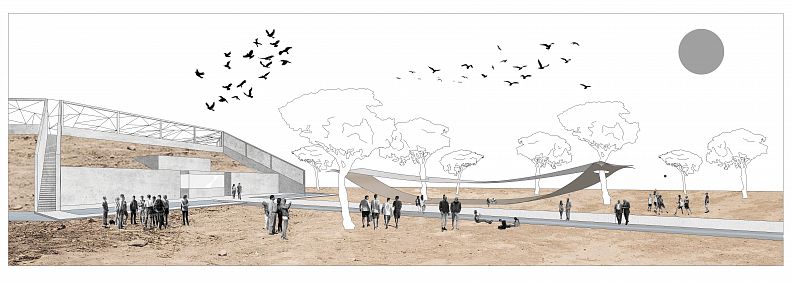SHADED AND COVERED - Conceptual project of the sustainable rehabilitation of amphitheater in the city centre of Ouagadougou (Bu

Project idea
The main concept of the project was to use the natural environment and the nature of the climate. Through analysing data and information about individual seasons in Burkina Faso, we came to two simple conclusions. What do the people of Ouagadougou need most in the dry season? And what in the rainy season? The answer is to provide shelter from the sun in the dry season and shelter from the rain in the rainy season. This request was our foundation for developing the project and creating the space between the proposed buildings. We also assumed that the project should be economically sustainable at the same time, we use the full potential the existing buildings possess as well as the existing vegetation on the plot of land.
Project description
The main idea behind the project is to create, at the lowest cost, a space that meets all the needs of users of this amphitheatre complex. The use of existing facilities and local building materials, simplicity, as well as multi-functionalism (multi-seasonality) were our keywords to create this project concept. Our main focus in the project was to blend into the surrounding landscape whilst at the same time be economical, we focused on renovation of projecting buildings facade using mudbrick, which is a very popular local material, and because of its colour will blend existing as well as new buildings in the existing landscape. The left walls of the existing buildings will help in determining new assumptions and will be the main urban guidelines of the area. The planned entrance to the complex will be in close vicinity of the transportation network and the customer parking lot (located outside the area of the proposed area) in the southwestern part of the plot. The entrances will have mysterious intersections in the walls that will prompt various paths to explore the premises. Newly designed facilities such as payment desks and toilets will be located next to the amphitheatre, and in terms of architecture are interestingly inscribed in the escarpment. The amphitheatre's facilities are expanded so that employees and actors are able to use it ergonomically. The workshop rooms have been divided into two: inside and outside the building. In this way, we use the local environment and conditions. In addition a completely new and additional facility, we have designed a gastronomic building also in operation after the closing hours of the amphitheatre. It is located on the eastern border of the plot and also inscribed in the walls (as a local fence) surrounding the design area. In the depths of the area, we decided to leave the area empty to emphasize the value of undeveloped areas in the dense tissue of the city. The whole idea and design are complemented by roofing and walls, which in the dry season will provide shelter from the sun, and in the rainy season rain from the rain. In addition, for sustainable reasons, we have designed water tanks that will accumulate rainwater during the rainy season. All this incorporates perfectly together to provide year-round functionality, to gradually explore this area in every hour, day and month.
Technical information
We decided to renovate the existing buildings in the southern part of the plot - by renewing the facade with mudbrick. In addition, on single-story buildings, we add a pent roof, which will allow to collecting rainwater. For roofs and slopes, we are designing a water trough in which the rainwater could be collected. After the dry season, it will be used to irrigate the greenery. Part of it would be passed through appropriate filters so it could be used for a water trough - fountains, used for cooling (soaking feet etc.) Depending on the amount of collected water, it could be (?) available to residents.
We decided to keep the existing greenery (trees, bushes) to show respect to natural flora, but also complementing them so that they create beautiful alleys. Partial low greenery would be removed due to poor condition.
The “triangular” roofing would be made of local materials, depending on availability. An interesting initiative could be the involvement of residents as part of integration workshops to create this roof (e.g. from unused textiles). Construction and tension ropes for the entire roofing could be made of natural materials (ex. cotton ropes) or steel depending on the budget and economic issues. The whole construction must be reinforced by concrete poles supporting the weight of the entire roofing.
Part of the existing and designed building's walls are "extended" to obtain concrete walls 4 m high in order to receive usable own shadows.
The building with the ticket office and public toilets, located by the amphitheatre, has been designed in minimalist style and also gain a uniqueness due to its location in the slope. The design assumes a minimum number of windows and door openings to keep the building cool inside.
The amphitheatre's facilities are projected in the idea of natural cooling. In the courtyard on level -1 a new channel for collecting water is created, which in the dry season will reflect cooled sun rays so that cooled air comes into the back room itself.
On level -1, we are projecting the main courtyard with a big reservoir to store rainwater, which in the dry season will reflect cooled sun rays which will make air coming into the back room so much cooler.
Co-authors
Eng. Of Architecture Izabela Warcaba
Eng. Of Architecture Daria Zimnicka
Eng. Of Architecture Ewa Żylińska
tutor: Ph.D, Eng. Of Architecture Magdalena Podwojewska
